いろいろ sinus tachycardia ecg images 337519-How to read sinus tachycardia ecg
Sinus Node Reentrant Tachycardia (SNRT) Caused by reentry circuit close to or within theJan 02, 18 · Sinus tachycardia is an increase in your heart rate In many cases, it's a sign of something simple, such as vigorous exercise or having too much caffeine In the case of IST, however, there'sECG IMAGES Journal of Community Hospital Internal Medicine Perspectives 11 # 11 Marc Mugmon This is an Open Access article distributed under the terms of sinus tachycardia is by

Dr Smith S Ecg Blog Chest Pain Sinus Tachycardia And St Elevation
How to read sinus tachycardia ecg
How to read sinus tachycardia ecg-Sinus bradycardia ECG, causes & management Definition of sinus bradycardia Sinus bradycardia fulfills the criteria for sinus rhythm but the heart rate is slower than 50 beats per minute ECG criteria follows Regular rhythm with ventricular rate slower than 50 beats per minute Pwaves with constant morphology preceding every QRS complexImages These are the images used in this course Click on any of the thumbnails to enlarge the image EKG Holter Monitor Schematic diagram of normal sinus rhythm for a human heart as seen on ECG Figure 11 Electrical cells and mechanical cells Figure 12



The 12 Rhythms Of Christmas Sinus Tachycardia Ems 12 Lead
Sinus tachycardia is a physiologic response to an underlying condition and not an arrhythmia per se, so treatment must be directed at the underlying cause Sinus tachycardia must be distinguished from other, regular narrowcomplex tachycardias, such as accelerated junctional rhythm and atrial flutter with 21 block38 terms dvcormier Cardiac Chp 27 63 terms Gathiri28 PLUS OTHER SETS BY THIS CREATORParamedic Tutor http//paramedictutorwordpresscomblog by Rob Theriault
Feb 05, 21 · ECG #1 This ECG shows a widecomplex tachycardia at 196 bpm The QRS complexes are 132 seconds in duration, per the ECG machine The rate is too fast to appreciate whether there are P waves present We did not see the onset of the tachycardia, but with a rate this fast and regular, it is most likely a reentrant rhythm, rather than sinusMay 27, 19 · Sinus tachycardia is one of the most common presentations you will find in the Emergency Department, defined as a heart rate greater than 100 beats per minute Remember, sinus tachycardia will always include pwaves on EKG and telemetry monitoring This rhythm can be a 'great masquerader' in emergency medicine, given that many differentMar , 21 · Inappropriate sinus tachycardia is a rare arrhythmia, generated in the sinus node and that produces high heart rates in response to mild stimuli not related to the patient's physiological needs On the electrocardiogram, a sinus tachycardia is observed,and despite their significant symptoms, it has a benign prognosis
Jul , · Cases by Type Select Type 21 AV Block 15 ECG Competition 15 ECG Competition Part II 16 ECG Competition 17 ECG Competition Part II 18 ECG Competition Part II 19 ECG Competition ECG Competition 5 Step Approach 5FU aberrancy Accelerated idioventricular rhythm Acidosis ACS ACS mimics ACS RIsk Factors Acute Pericarditis AdvancedOct 31, 11 · 7 Sinus Arrhythmia Sinus Arrhythmia The rhythm is irregular There is one upright P wave for each QRS complex The rate is between In this rhythm strip, the difference between the shortest and longest RR interval is over 012 sec and the PR intervals should be the same 8 Sinus TachycardiaNov 23, 19 · Sinus tachycardia refers to an increased heart rate that exceeds 100 beats per minute (bpm) The sinus node, or sinoatrial node, is a bundle of



The Trouble With Sinus Tachycardia Ems 12 Lead




Sinus Tachycardia Ecg Emtprep Com Youtube
Oct 09, 19 · Sinus tachycardia often has a very obvious cause, such as hypovolemia, fever, pain, anxiety, vigorous exercise, or hypoxia Sinus tachycardia usually has a distinct, upright P wave in Lead II, and a clearlyseen, often negative, P wave in Lead V1 This ECG does not show the onset of the tachycardia, and is not long enough to evaluate for rateAtrial Flutter most of the time it's tachycardia in its nature Atrial Rate = 13 x (only 3 second strip is shown above) = 260 Ventricular Rate = 6 x = 1 On the test, don't call them pwaves, say they are Fwaves atria is contracting very fast in this case In atrial flutter, the ventricular rhythm is normal!ภาวะ Sinus tachycardia เกิดขึ้นมากเก ินไปโดยไม เหมาะสมแก Sinus Arrhythmia ECG 1 Rate usually Criteria 2 Rhythm irregular, phasic with respiration (increaserespiration (increase during inspiration) 3




Paroxysmal Supraventricular Tachycardia Background Etiology Epidemiology



Adenosine For Sinus Tachycardia Try To Avoid This Ems 12 Lead
Sinus bradycardia occurs on an ECG when there is a normal upright P wave in lead II ― sinus P wave ― preceding every QRS complex with a ventricular rate of less than 60 beats per minuteSinus tachycardia is when your body sends out electrical signals to make your heart beat faster Hard exercise, anxiety, certain drugs, or a fever can spark it When it happens for no clear reasonSinus tachycardia causes, ECG, normal variants & pathological variants Sinus tachycardia is the most common tachyarrhythmia (tachycardia) Sinus tachycardia is the result of an increased rate of depolarization (ie increased automaticity) in the sinoatrial nodeThis simply means that the sinoatrial node discharges electrical impulses at a higher frequency than normal
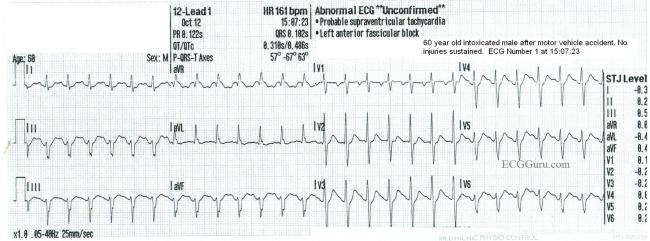



Sinus Tachycardia Ecg Guru Instructor Resources



Rhythm Strip Flash Card Practice
Master ECG Sinus Tachycardia with Picmonic for Nursing RN With Picmonic, facts become pictures We've taken what the science shows image mnemonics work but we've boosted the effectiveness by building and associating memorable characters, interesting audio stories, and builtin quizzingJun 04, 21 · These images are a random sampling from a Bing search on the term "Sinus Bradycardia" Click on the image (or right click) to open the source website in a new browser window Reentry Atrioventricular Reciprocating Tachycardia Bradycardia BRASH Syndrome Brugada Syndrome Cardiac Arrhythmia Delayed Tachycardia EKG Changes in Syncope due toJun 14, 17 · The ECG criteria for sinus tachycardia including causes and treatment are discussed in this review The syndrome of inappropriate sinus tachycardia SIST is mentioned




Sinus Tachycardia Images Stock Photos Vectors Shutterstock



Q Tbn And9gcrj7jjxc7qhufopyxh0dmynfaarb1a8793s5qx8ro7 Budmdsrb Usqp Cau
Mar 09, 21 · ST changes can be secondary to the tachycardia itself, secondary to abnormal conduction, a primary abnormality from ischemic, metabolic or toxic causes—or a combination So analysis of the ST segment and T waves needs to be put in context of the rest of the ECG, and the patient Back to the cases Case 1 sinus tachycardia from TCAtype ODInappropriate sinus tachycardia (IST) occurs when the heart beats very quickly without a good reason It is a type of heart rhythm abnormality called an arrhythmia Tachycardia is the medical term for a fast heart rate In adults, a heart rate greater than 100 beats per minute when a person is at rest is considered tachycardiaAug 01, 18 · Sinus tachycardia is usually a secondary condition Inappropriate sinus tachycardia is a primary condition diagnosed in patients with symptomatic persisting sinus tachycardia in which the below causes have been excluded ECG Library Basics – Waves, Intervals, Segments and Clinical Interpretation;




Why Does Atrial Flutter Fool Us So Often Top 10 Tips To Minimize Uncertainty Learn Advanced




Sinus Arrhythmia Definition Signs And Diagnosis
ECG Image Index The following ECG categories contain hundreds of ECGs that range from the sublime to the ridiculous, from simplicity to complexity, and from boring to fascinating Many of the ECG rhythm strips come from the collection of the late Dr Alan Lindsay, master teacher of electrocardiographyThere is a variation of at least 012 seconds between the longest and shortest RR intervalsMar , 21 · Premature ventricular complexes (PVCs), also known as premature ventricular contractions, ventricular premature beats (VPBs) or ventricular extrasystoles, are ectopic impulses originating from an area distal to the HisPurkinje system Premature ventricular complexes are the most common arrhythmia observed in patients without structural heart disease 1
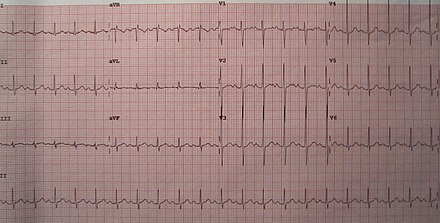



Sinus Tachycardia Wikiwand




Sinus Tachycardia Ecg Simulator Arrhythmia Simulator Gif Gfycat
The ECG is characterized by deep and persistent, concaveupward STsegment depression in multiple limb and chest leads ECG changes are stable over time and accentuated during exercise Patients present with syncopal episodes, ventricular tachycardia (including torsade de pointes), ventricular fibrillation and sudden cardiac arrestSinus Tachycardia is characterized by a pulse rate of more than 100 beats per minute in adults The electrical signals originate in the sinoatrial (SA) node Appropriate sinus tachycardia can result from exercise, alcohol or caffeine, drugs and anxietyMultifocal atrial tachycardia (chaotic atrial tachycardia) is an irregularly irregular rhythm caused by the random discharge of multiple ectopic atrial foci By definition, heart rate is > 100 beats/minute Except for the rate, features are the same as those of wandering atrial pacemaker Symptoms, when they occur, are those of rapid tachycardia
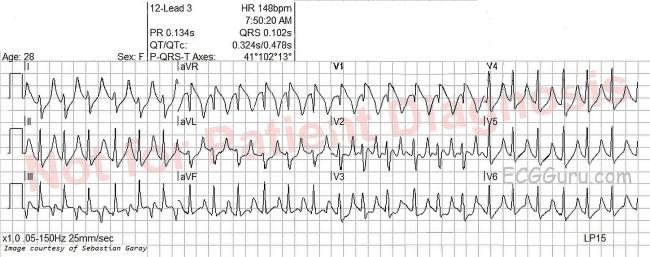



Sinus Tachycardia Ecg Guru Instructor Resources




Pin On Nurses
Sinus tachycardia rhythm NSR rhythm sinus arrhythmia rhythm sinus bradycardia rhythm sinus rhythm with sinus pause rhythm sinus rhythm with PVC EKG pictures 35 terms marykansas ECG Name that rhythm!ECG changes in left ventricular hypertrophy (LVH) Large Rwaves in left sided leads (V5, V6, I and aVL) and deep Swaves in right sided leads (V1, V2) indicate the the vector of the left ventricle is amplified Secondary STT changes in left sided leads – Left ventricular hypertrophy is often accompanied by J point depression, downsloping ST segment and inverted (asymmetric) TSinus Tachycardia Sinus tachycardia refers to a sinus rhythm with a heart rate greater than 100 BPM (tachy fast) Sinus tachycardia may be due to fever, which results in increased excitability of the SA node Sympathetic stimulation (from a variety of causes) and cardiac toxicity may also cause sinus tachycardia




Jk Han Md Second Referral Today For Persistent Sinus Tach Still Not Sinus Tachycardia Always Compare To Baseline If Available Cardioed Foamed T Co Lvjkki11mf




Em Cases Ecg Cases 19 Tachycardias
Dec 17, 17 Explore monroe yancie's board "12 LEAD EKG", followed by 144 people on See more ideas about ekg, cardiac nursing, icu nursingApr 8, 17 Explore Jennifer Ream's board "Sinus Tachycardia" on See more ideas about sinus tachycardia, dysautonomia, dysautonomia potsAug 01, · Focal atrial tachycardia (FAT) is a form of supraventricular tachycardia (SVT) originating from a single ectopic focus within the atria but outside of the sinus node Focal atrial tachycardia (FAT) Consistent, abnormal P wave morphology indicating an ectopic focus The term FAT is commonly used synonymously with atrial tachycardia, a broader




Ecg Quiz Very Wide And Very Fast Emergency Physicians Monthly



The 12 Rhythms Of Christmas Sinus Tachycardia Ems 12 Lead
Identifying ECG Features – Sinus Arrhythmias Rate (In Sinus Arrhythmias) The heart rate per minute is normal ();In this video we take a look at the basic components of sinus tachycardia Be sure to visit our website, EMTprepcom for more great trainingThis video is spECG changes in right bundle branch block (RBBB) and left bundle branch block (LBBB) Right bundle branch block ( Figure 2, panel A) is characterized by a second R wave (denoted R') in V1, which gives lead V1 an rSR' complex In lead V6 a broad and deep S wave is noted In left bundle branch block lead V1 shows a deep Swave and in V6 a broad
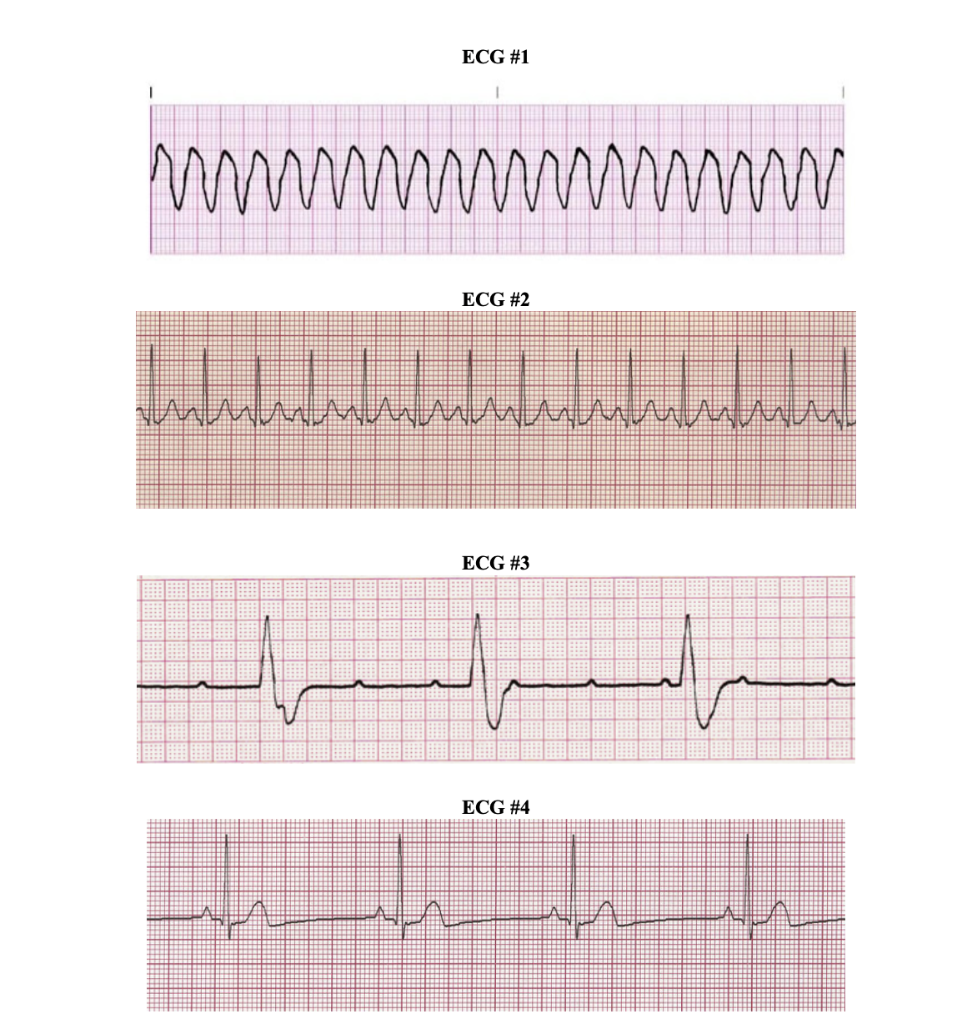



Normal Sinus Rhythm Nsr Identify The Ecgs With Chegg Com




Respiration Driven Excessive Sinus Tachycardia Treated With Clonidine Bmj Case Reports
The class definition EKG waveform will provide examples of rhythm strips images and 12Lead EKG images, Pathophysiological information and Resources pertainig to the specific Rhythm/Beat Class will be provided and presented Sinus Normal Sinus Rhythm C1, C2, C3, C4 R7 Sinus Tachycardia (HR ≥ 1 BPM) C1, C2, C3, C4 R18 SinusMar 31, 21 · 559 ventricular tachycardia stock photos, vectors, and illustrations are available royaltyfree See ventricular tachycardia stock video clips of 6 ventricular fibrillation ventricular arrhythmias ecg arrhythmia atrial fibrillation ecg tachycardia monitor strip tachycardia vector sinus tachycardia atrial fibrillation death heartJun 15, 19 Supraventricular tachycardia is a series of rapid heartbeats that begin in or involve the upper chambers (atria) of the heart SVT can cause the heart to beat very rapidly or erratically As a result, the heart may beat inefficiently, and the body may receive an inadequate blood supply See more ideas about cardiac nursing, rapid heart beat, atria



The 12 Rhythms Of Christmas Sinus Tachycardia Ems 12 Lead




Sinus Tachycardia Images Stock Photos Vectors Shutterstock
Aug 01, · Inappropriate Sinus Tachycardia Typically seen in young healthy female adults Sinus rate persistently elevated above 100 bpm in absence of physiological stressor Exaggerated rate response to minimal exercise ECG indistinguishable from sinus tachycardia;However, the rate increased during inspiration and then slows during expiration Rhythm (In Sinus Arrhythmias) Irregular rhythm;Sinus tachycardia (also colloquially known as sinus tach or sinus tachy) is an elevated sinus rhythm characterized by an increase in the rate of electrical impulses arising from the sinoatrial nodeIn adults, sinus tachycardia is defined as a heart rate greater than 100 beats/min (bpm) The normal resting heart rate is 60–100 bpm in an average male adult and 6090 bpm in an average




Rhythm Recognition Acls Medical Training




Sinus Tachycardia Ecg Training Youtube



Mcgill Ekg Learning Project




Ecg Educator Blog Sinus Tachycardia




Sinus Rhythm Bradycardia And Tachycardia Youtube




Dr Smith S Ecg Blog Chest Pain Sinus Tachycardia And St Elevation




The Ecg On Admission Shows Sinus Tachycardia With A Rate Of 1 A Deep Download Scientific Diagram
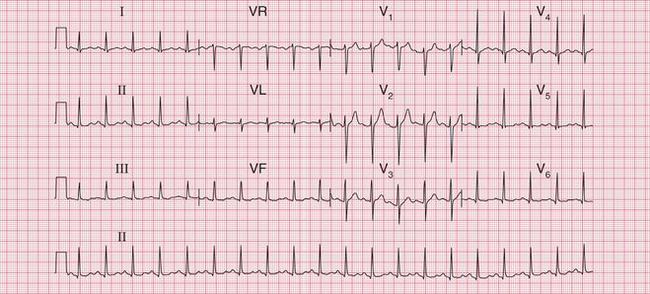



The Ecg When The Patient Has A Tachycardia Thoracic Key



The Trouble With Sinus Tachycardia Ems 12 Lead




Differential Diagnosis Of Sinus Tachycardia
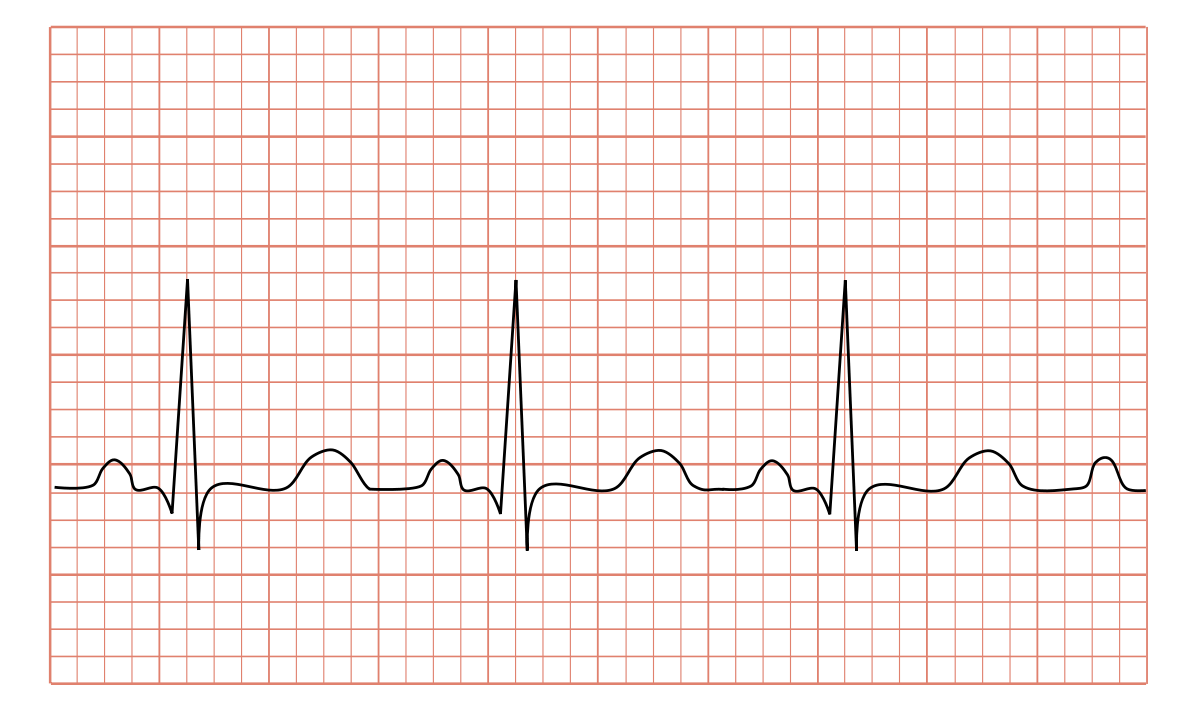



Tachycardia Wikipedia




Rhythm Recognition Acls Medical Training




Sinus Tachycardia Ekg Ecg Ankara Kardiyoloji Kalp Hastaliklari Mete Alpaslan Doktorekg Com




Sinus Tachycardia Wikiwand




Shutterstock Puzzlepix
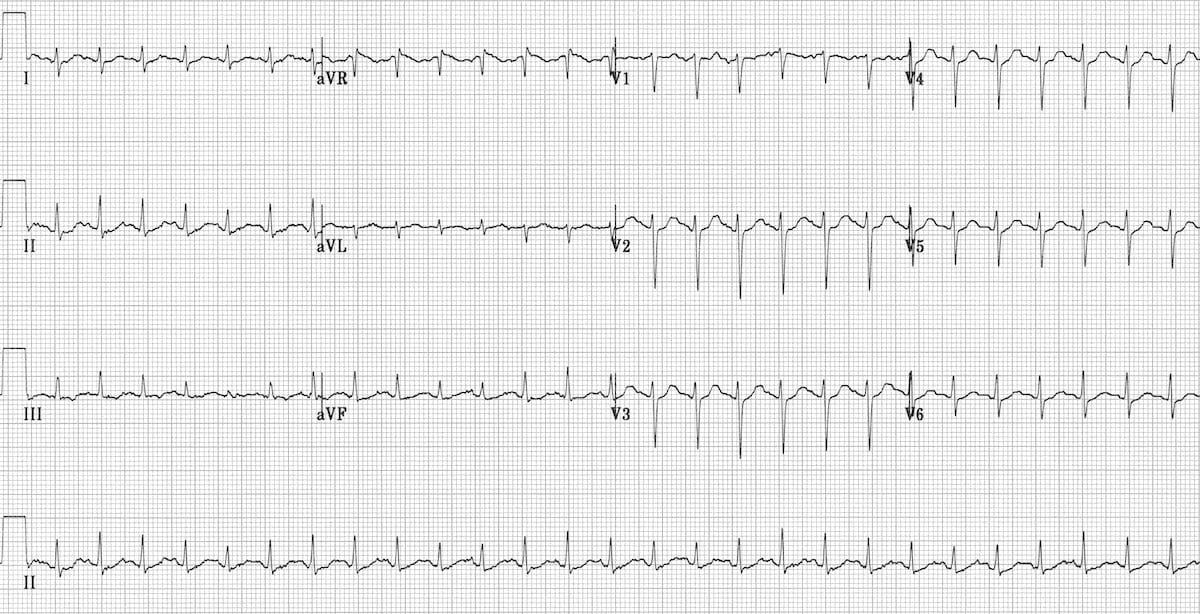



Sinus Tachycardia Litfl Ecg Library Diagnosis




Pin On Life As A Student Nurse




Supraventricular Tachycardia Vs Sinus Tachycardia Epomedicine




Sinus Tachycardia Litfl Ecg Library Diagnosis




Sinus Tachycardia Images Stock Photos Vectors Shutterstock




Learntheheart Com Sinus Tachycardia Ecg Name 10 Causes Rarely Primary Disorder Requiring Sa Node Ablation



Q Tbn And9gcsiiuwyirizwffk67aig3fx Hqe40soqstmyg 8qmx5ymq5lado Usqp Cau
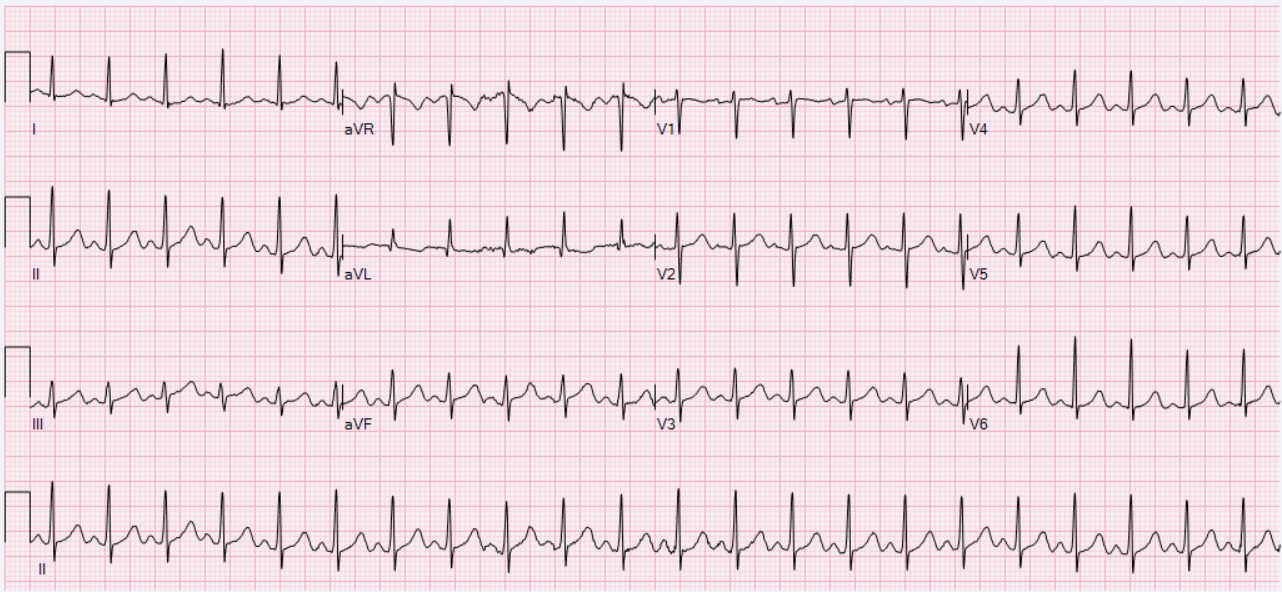



File Ecg Sinus Tachycardia 132 Bpm Jpg Wikimedia Commons




Ecg S1q3t3 With Sinus Tachycardia Download Scientific Diagram




Dr Smith S Ecg Blog Chest Pain Sinus Tachycardia And St Elevation
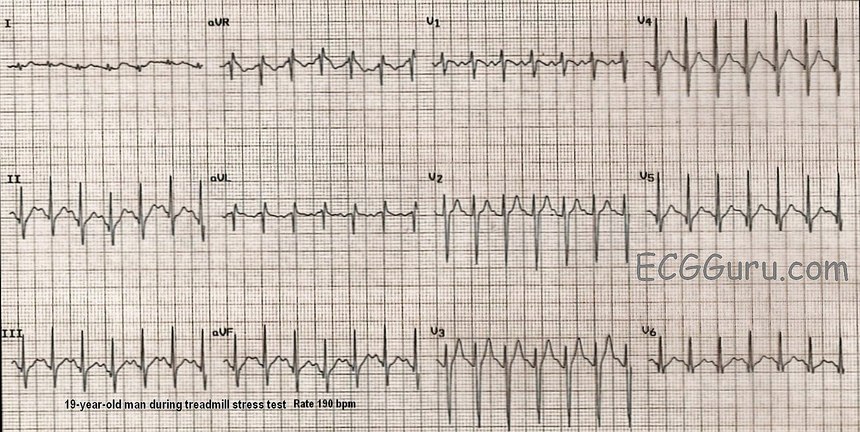



Sinus Tach Or Svt 4 Clues To Tell The Difference




Figure Sinus Tachycardia As Seen On Ecg Contributed By Wikimedia Commons Glenlarson Public Domain Self Statpearls Ncbi Bookshelf




Inappropriate Sinus Tachycardia In Pregnancy A Benign Phenomena Bmj Case Reports
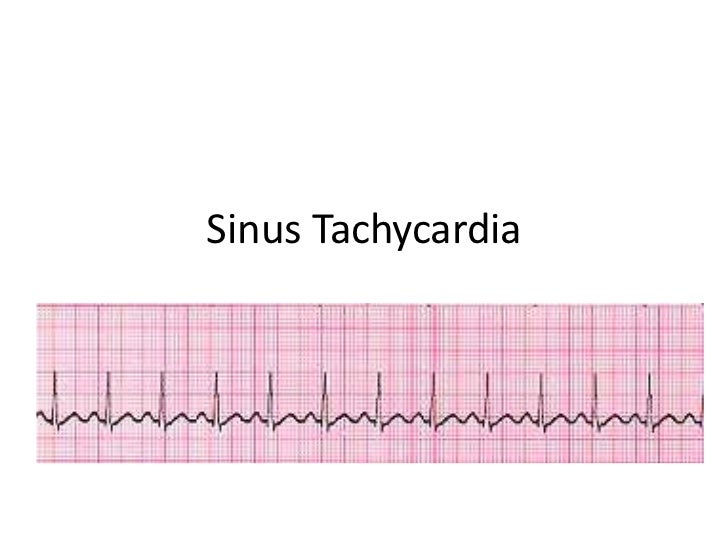



Sinus Tachycardia




Inappropriate Sinus Tachycardia In Pregnancy A Benign Phenomena Bmj Case Reports




Ecg Interpretation Ecg Interpretation Review 72 Sinus Tachycardia In A Child Juvenile T Wave Variant Baseline Wander Artifact



Mcgill Ekg Learning Project




Ecg On Admission Sinus Tachycardia At 103 Bpm No Evidence Of Ischemic Download Scientific Diagram




What Is Sinus Tachycardia Quora




Sinus Tachycardia Ekg Ecg Ankara Kardiyoloji Kalp Hastaliklari Mete Alpaslan Doktorekg Com



The 12 Rhythms Of Christmas Sinus Tachycardia Ems 12 Lead



Veterinary Cardiology
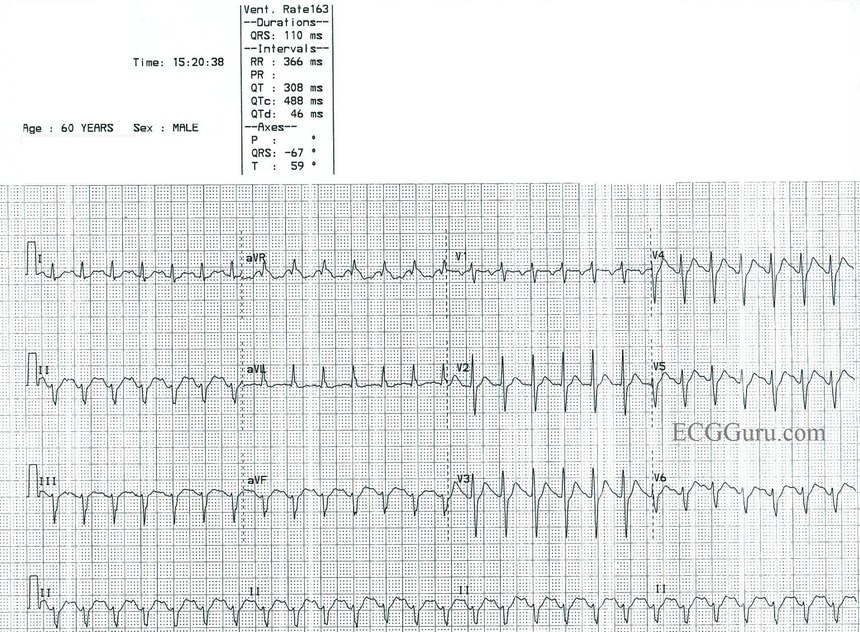



Sinus Tach Or Svt 4 Clues To Tell The Difference




Irregular Narrow Complex Tachycardia Circulation




Sinus Tachycardia Litfl Ecg Library Diagnosis




Ecg Basics Sinus Tachycardia In A Toddler Ecg Guru Instructor Resources



Q Tbn And9gcsfuufxub3i7 5kb0csezipk2eomkvuczudwknvyqaul4ko4pfh Usqp Cau




Sinus Tachycardia Images Stock Photos Vectors Shutterstock




Sinus Tachycardia Wikipedia




Inappropriate Sinus Tachycardia Mistaken For Relapse Of Reentrant Supraventricular Tachycardia In A Young Woman Treated Successfully With Ivabradine




Ecg Review Sinus Tachycardia With Tall Peaked T Waves 15 07 06 Ahc Media Continuing Medical Education Publishing




Irregular Narrow Complex Tachycardia Circulation




Sinus Tachycardia Ekg Ecg Ankara Kardiyoloji Kalp Hastaliklari Mete Alpaslan Doktorekg Com




Sinus Tachycardia Images Stock Photos Vectors Shutterstock




About Sinus Tachycardia Hope For Hearts Australia




Electrocardiogram Ecg Showing Sinus Tachycardia At 1 Bpm Right Download Scientific Diagram




Ecg 3 What Is Sinus Tachycardia Health And Usmle Answers




Sinus Tachycardia Ecg Sinus Tachycardia Ecg Ekg Grepmed




The Ecg Role In Identifying The Etiology Of Tachycardia Induced Cardiomyopathy Tic Sciencedirect




Ecg On Admission Shows Sinus Tachycardia With Complete Right Download Scientific Diagram



Natalies Casebook




Ecg Sinus Tachycardia Youtube




Sinus Tachycardia Wikipedia




Dr Smith S Ecg Blog Alcohol Withdrawal And Sinus Tachycardia




Sinus Tach Or Svt 4 Clues To Tell The Difference



The 12 Rhythms Of Christmas Sinus Tachycardia Ems 12 Lead
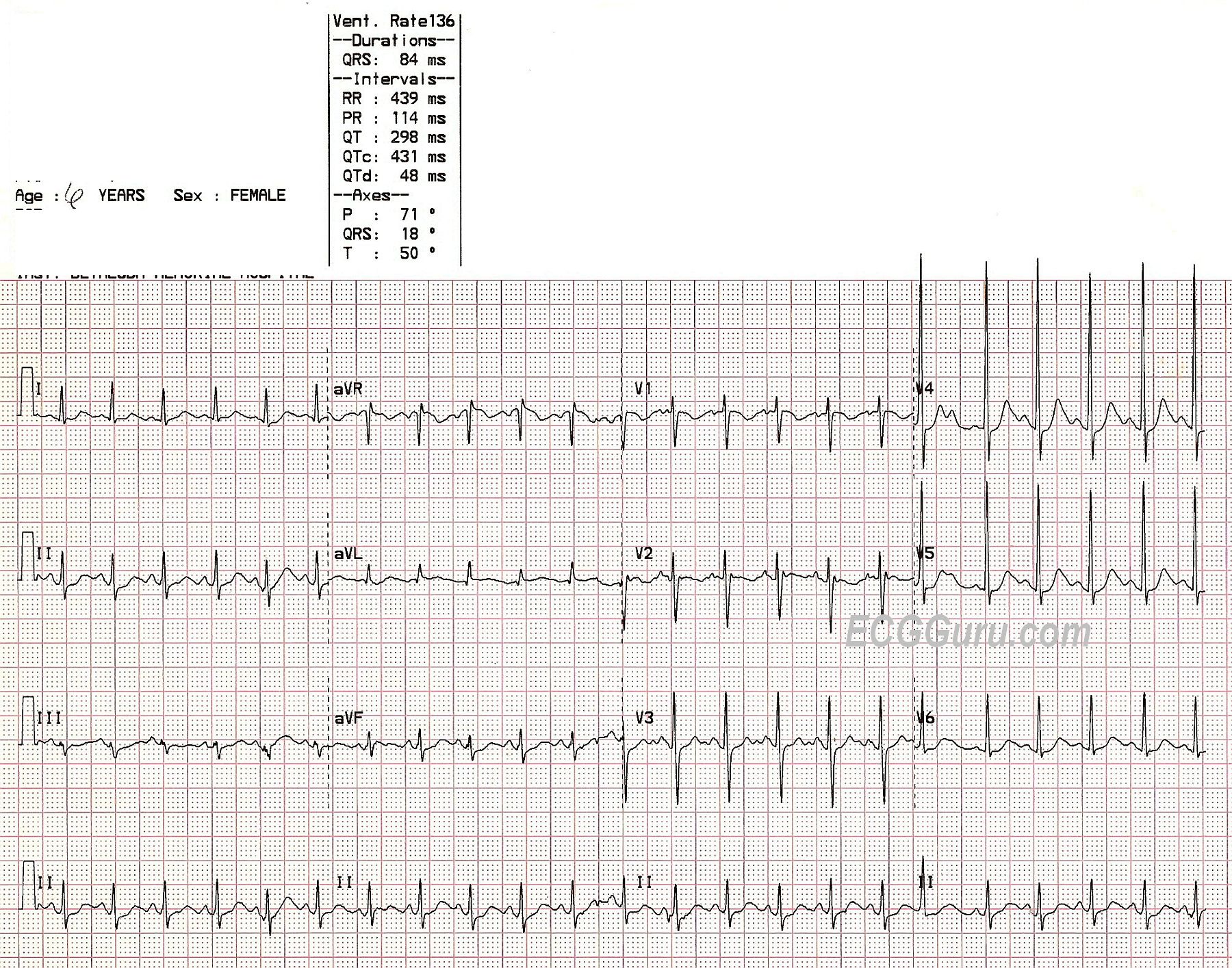



Sinus Tachycardia In A Child Ecg Guru Instructor Resources
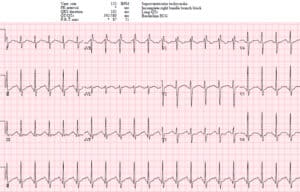



Em Cases Ecg Cases 19 Tachycardias




How To Identify Sinus Tachycardia Ecg Stripe Sinus Tachycardia Ecg Findings Ecg Questions Youtube
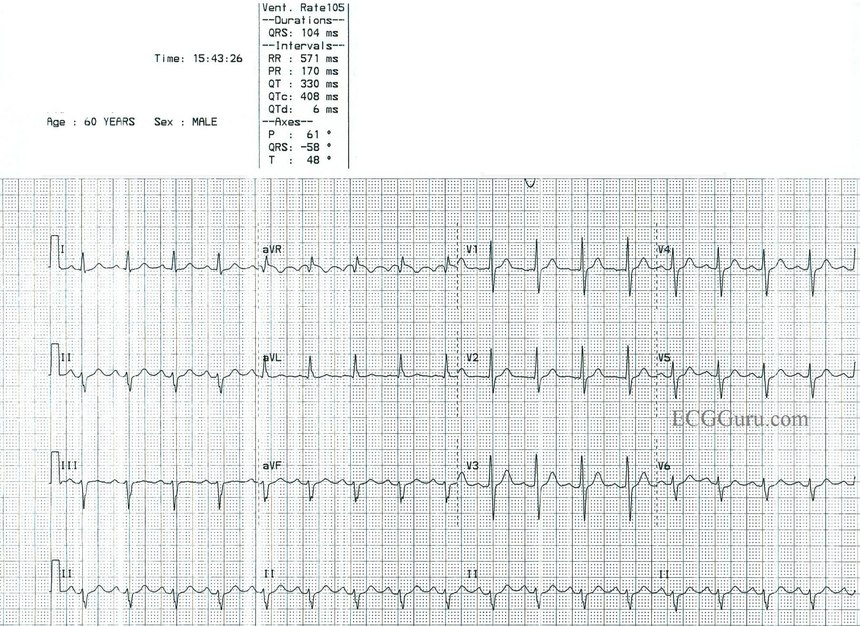



Sinus Tach Or Svt 4 Clues To Tell The Difference




Pin On Tachycardia



1
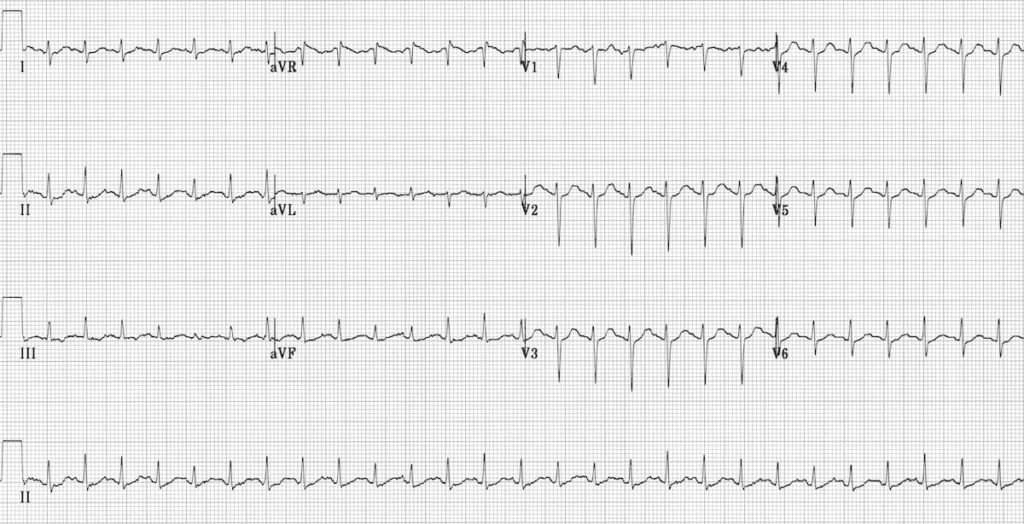



Sinus Tachycardia Litfl Ecg Library Diagnosis




Ecg On Admission Shows Sinus Tachycardia 109 Bpm And The Presence Of Download Scientific Diagram
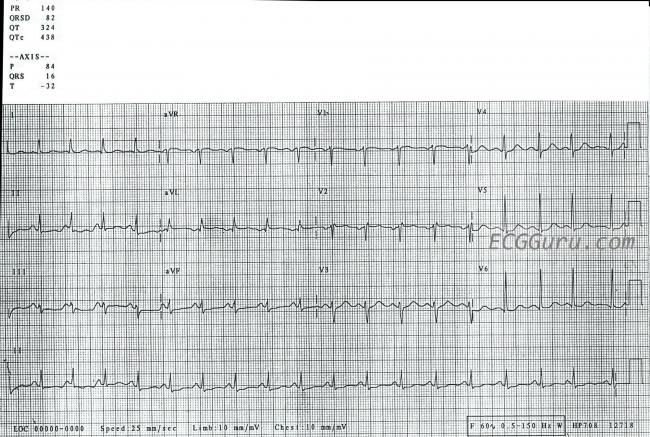



Sinus Tachycardia Ecg Guru Instructor Resources




Sinus Tachycardia Images Stock Photos Vectors Shutterstock




Overview Of Cardiac Arrhythmias Amboss




Atrial Tachycardia Diagnosis And Treatment The Cardiology Advisor




A Ecg 2 Days After Admission Revealing Sinus Tachycardia With Download Scientific Diagram
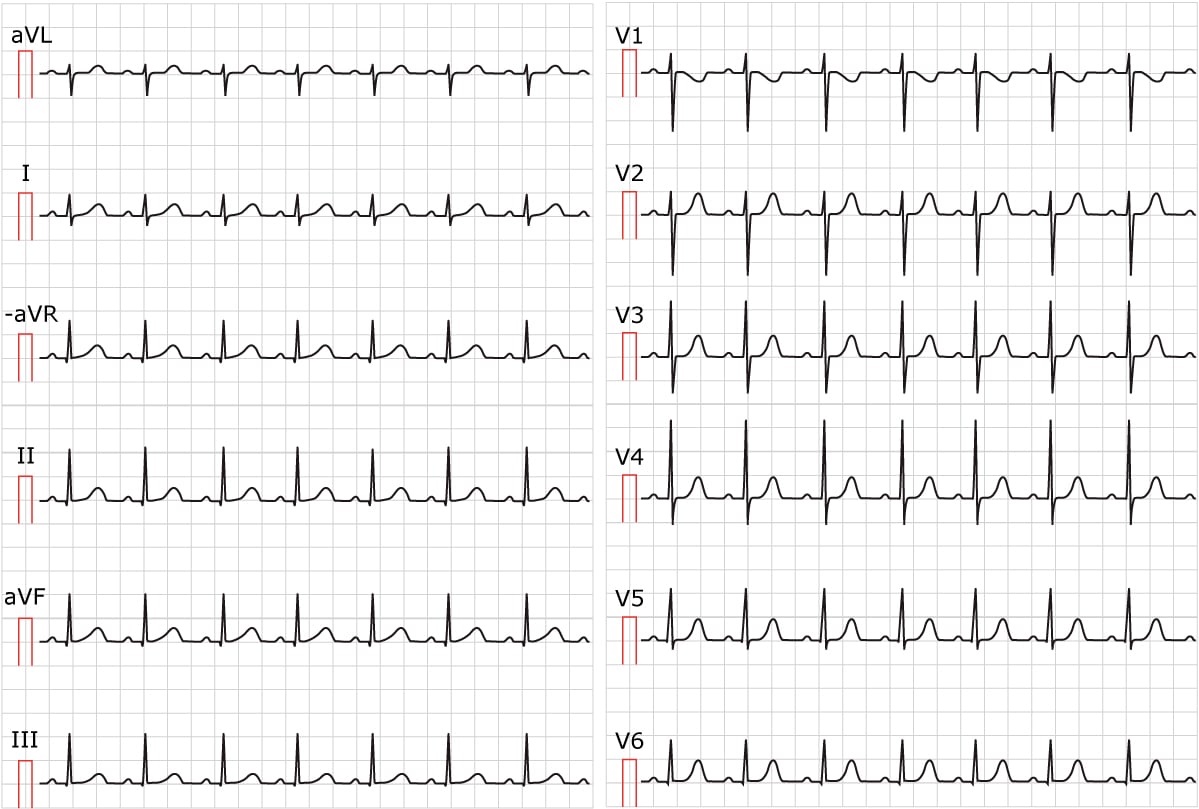



Sinus Tachycardia Inappropriate Sinus Tachycardia Ecg Echo



The 12 Rhythms Of Christmas Sinus Tachycardia Ems 12 Lead
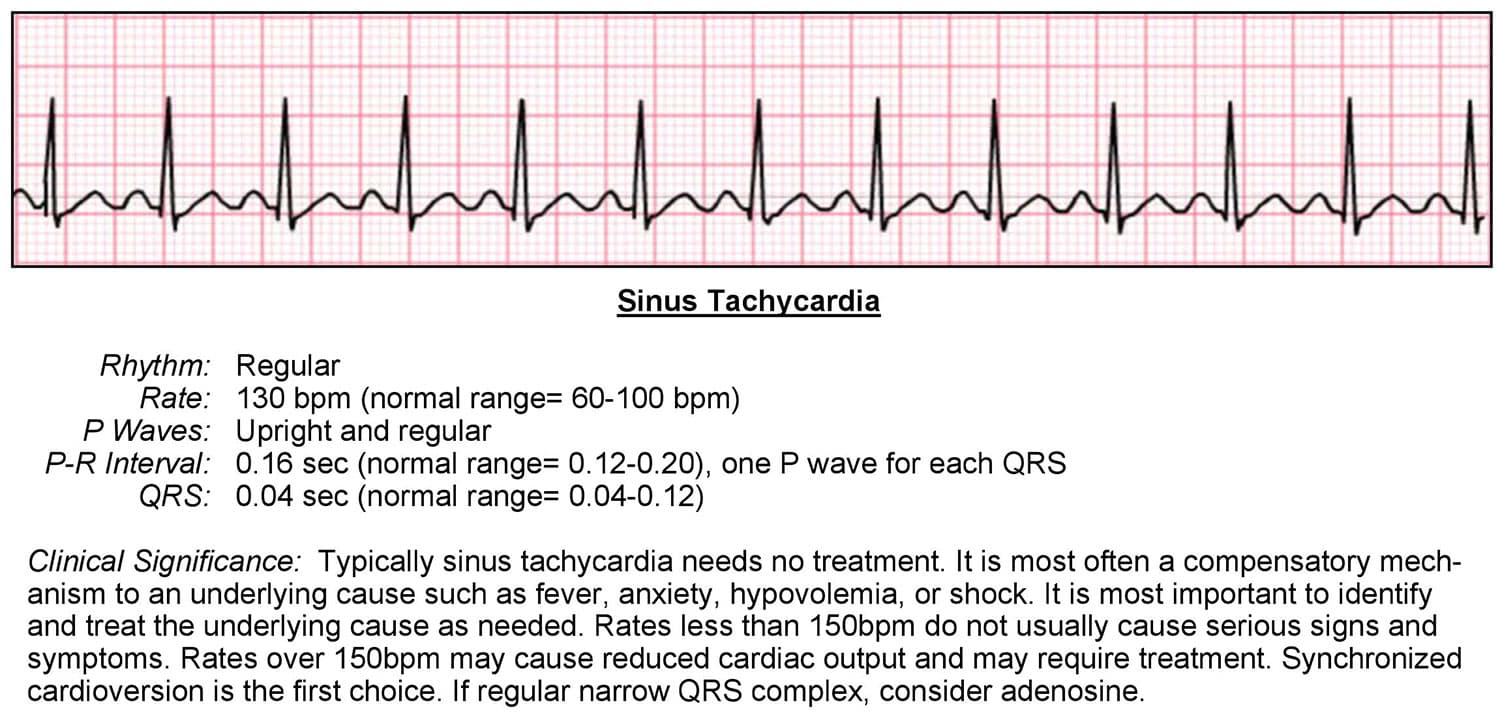



Tachycardia Acls Wiki



The 12 Rhythms Of Christmas Sinus Tachycardia Ems 12 Lead




Ecg Of Case 1 There Is Sinus Tachycardia With Deep Q Wave In Leads I Download Scientific Diagram




Figure 1 From Refractory Inappropriate Sinus Tachycardia Successfully Treated With Radiofrequency Ablation At The Arcuate Ridge Semantic Scholar




Sinus Tachycardia The Premier Ekg Resource For Medical Professionals Ekg Md Dr Anthony Kashou




Ecg Shows Sinus Tachycardia With Widespread St Elevation Pr Elevation Download Scientific Diagram


コメント
コメントを投稿